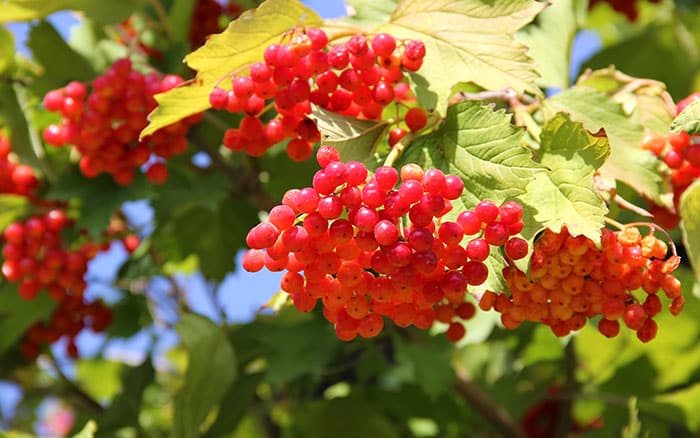Having a range of plants in the garden that flower at different times of the year is a wonderful way of providing nectar and food for beneficial insects. But, all kinds of wildlife need some form of shelter and growing shrubs is an ideal way to create that for them in a garden setting.
Encouraging wildlife into the garden is not only a great way of helping increase biodiversity but can also help create your own mini army of pest removers. Our native ground beetles love to feed on slugs and a family of blue tits can eat 100,000 aphids a year.
Why shrubs?
Most shrubs are multi-stemmed and grow low to the ground. They provide shelter, food, and breeding spaces for wildlife, to give them safety and cover, especially for creatures like birds, hedgehogs, mice and insects. Sparrows will fly into dense cover plants between feeding where they can be heard happily chirping to each other.
Additionally, the leaves, flowers, and berries will provide food and nectar for wildlife. Insects, like butterflies, can use the shrubs as natural windbreaks to shelter from gusting winds.
There are also many different types of shrubs and choosing a range of different shrubs can provide food for wildlife at different times of the year, especially at the beginning and end of the year when food is in short supply.

Native vs non-native
When deciding which shrubs to choose it’s important to include a range of native shrubs as they support a wider range of biodiversity than non-natives. Also, many wild creatures have evolved alongside native species over long period of time. For instance, fuchsia for the elephant hawkmoth and alder buckthorn for the brimstone butterfly.
There are also good reasons for including non-native shrubs. Many are evergreens, providing shelter and hiding places for wildlife over winter and they can also increase the range of nectar rich flowers at different times of the year. As well as that, they add to the supply of much needed winter berries.

Planning planting
When planning your wildlife shelter, you’ll want to make the area look attractive as well as provide a wonderful wildlife safe, shelter habitat.
Include a mix of deciduous and evergreen shrubs, both native, such as Viburnum opulus (guelder rose) and Ligustrum officinale (privet) and non-native such as Berberis (barberry) and hebe.
Dense evergreen plants like Viburnum tinus will provide cover for hibernating insects and birds to nest, especially blackbirds and robins, who start nest building before deciduous plants have come back into leaf.
Evergreen shrubs also provide year-round wildlife shelter.
When winter weather is at its worst many birds move into gardens for shelter and food. Adding fruiting shrubs like hawthorn, holly, pyracantha and cotoneaster will supply both meals and shelter, especially for migrating birds.
Try to plan so that plants join up with other plants in your garden or a neighbour’s. Wildlife needs safe corridors to move around in, because having to cross open spaces makes wildlife an easy target for predators to pounce on.
A wide range of heights will appeal to and help a wider range of wildlife.

Seasonal help
Include shrubs that will flower during all four seasons:-
- Spring – flowering currants, forsythia and Ceanothus
- Summer – hebe, lavender and elder
- Autumn – heather, St John’s wort and Japanese aralia
- Winter – ivy, witch hazel and sweet box
Berries, hips, and haws
It’s particularly important to provide a source of food for wildlife during the winter months.
Berries, hips, and haws ripen during the autumn months and are a perfect source of food for a variety of wildlife.
Blackbirds and thrushes love Pyracantha berries, and this shrub will also offer safety for nesting birds and shelter for hibernating insects. It can also be grown against a house wall. So, if you’re short on space this shrub is a great way of doing your bit for wildlife.
Species roses like Rosa rugosa (red Japanese rose) will provide colourful hips beloved by birds and the flowers attract beneficial insects, butterflies, moths, and other pollinators.
The ‘haw’ fruit of hawthorn are loved by yellowhammer birds and hawthorn shield bugs and the plant itself provides shelter for slow worms and wood mice.


Leave A Comment